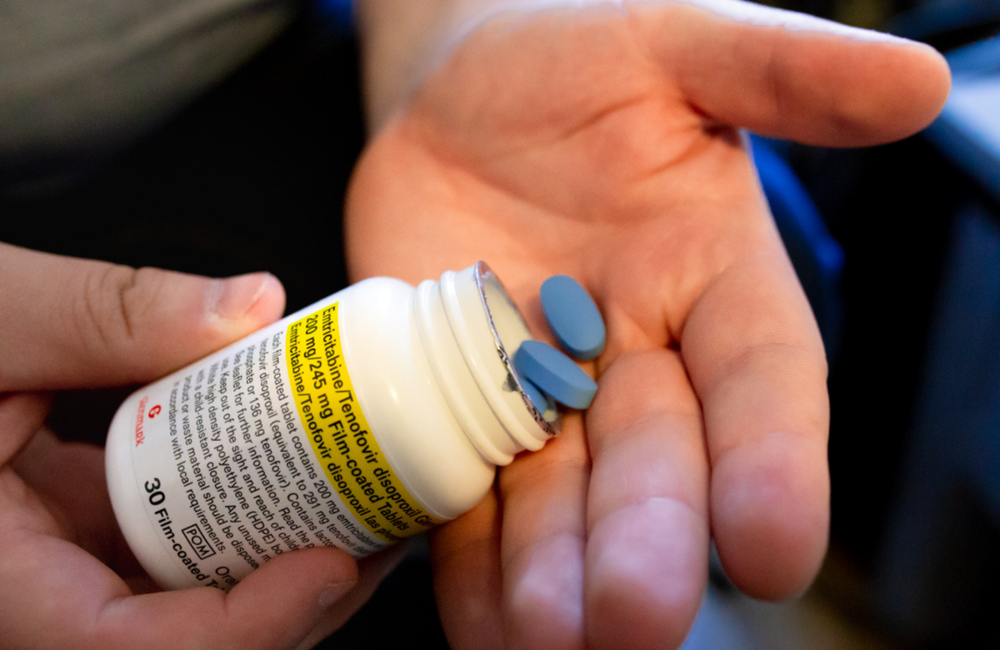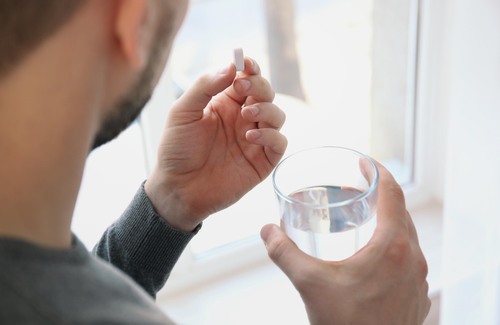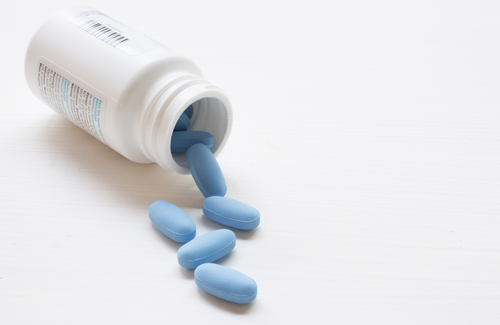
London’s 56 Dean Street, the largest sexual health clinic in Europe, has just reported its latest data on new HIV diagnoses. They show that while the number of new diagnoses among its users continued to fall in 2020, the proportion who had been recently taking pre-exposure prophylaxis (PrEP) considerably increased.
In 2020, nearly one in five people diagnosed with HIV had used PrEP in the last three months, some very recently.
This does not imply that PrEP was more frequently failing to prevent HIV infection. The increase in diagnoses among recent PrEP users mirrors an overall increase in the proportion of clinic users who were taking PrEP. Dr Nicoló Girometti of the 56 Dean Street Collaborative Group told aidsmap.com that in 2020 about 15,000 PrEP users – about a third of all attendees – attended Dean Street.
"There were 25 HIV diagnoses among people using PrEP in 2020 – a negligible fraction of the 15,000 gay and bisexual men and transgender women who were given PrEP at Dean Street in that year," he said.
But, over the last five years, one in eight recent PrEP users who were diagnosed have reported “excellent” adherence to PrEP. This means there are a number of cases that merit further investigation.
aidsmap.com last reported on HIV diagnosis and PrEP use at Dean Street two years ago. That report looked at diagnoses between July 2015 and January 2019. Over those three and a half years, the clinic had diagnosed 939 people with HIV, of whom just 22 (2%) had previously taken PrEP.
The latest report covers the five years between January 2016 and December 2020. The number of people diagnosed with HIV over that time period was not very much larger – 1030. This is because diagnoses per year fell from 335 in 2016 to 129 in 2020 – a decrease of more than 60%, or 12% year-on-year.
However, the proportion who had taken PrEP recently, in the 90 days prior to HIV diagnosis, increased during that time – and in 2020 increased sharply.
Between 2016 and 2018 the numbers were in single figures. In 2018, for instance, six people among 200 diagnosed had taken PrEP recently (3%). This increased slightly in 2019 to 10 out of 157 (6.25%). But in 2020 there were 25 recent PrEP users among 131 people diagnosed (19%).
Over the entire five-year period there were 52 former PrEP users among 1030 diagnoses. All 52 were gay or bisexual men, except for one trans woman. Their average age was 34, a third were of non-White ethnicity and two-thirds were not born in the UK – similar to other people diagnosed at Dean Street.
A majority (63%) had sourced their PrEP from a non-clinical setting – buying it online or getting it from friends or sexual partners. As availability expanded in 2019-2020 due to the IMPACT study, the proportion getting it from the clinic rose.
Of the 52 former PrEP users, at least 36 (69%) were recently infected, which means they had either tested HIV negative within the previous six months, or an incidence assay showed evidence of recent infection. As there were eight people for whom a date of infection could not be ascertained, this means that as many as 85% could have been recently infected. Thirteen people (25%) had had HIV for less than 100 days.
There were 69% who reported they had been taking daily PrEP and 31% event-based PrEP, though at least one in five had changed how they were taking it in the previous six months.
Of interest was the fact that according to the people diagnosed, the median time between their last PrEP pill and their positive HIV test was only 14 days, and 35% told the clinic that they had taken a PrEP pill the day before their diagnosis.
So why had PrEP apparently not worked? Investigating the self-reported figures, Girometti and colleagues found that 46% of recent PrEP users diagnosed had clearly had periods of inadequate adherence since their last negative HIV test (this means taking three or fewer pills a week). Another 17% had tried to take PrEP regularly but their supply had been interrupted. Sixteen per cent had chosen to stop, either because of ‘PrEP fatigue’ or because they had started a new and supposedly monogamous relationship. Six per cent had had unplanned sex during a period not covered by PrEP. And there was one interesting case of a person who had taken a drug unauthorised for PrEP – the integrase inhibitor raltegravir.
This left, however, seven people (13%) who reported good adherence and for whom there seemed no obvious cause for their PrEP failure.
One interesting possibility floated by the researchers is that they may have had HIV longer than they thought, and that PrEP had possibly led to a negative HIV test despite recent infection.
Even in the previous 2019 report it had been noted that the average viral load among PrEP users when diagnosed was 7700 compared with 58,000 among non-PrEP-users. The new report found an even lower average viral load among recent PrEP users – 3020, compared with 52,4800 in non-users. Nineteen per cent of PrEP users had a viral load below 200 when diagnosed, compared with just 3% of non-users. And their CD4 counts were higher – 632 versus 474, also suggesting less HIV activity. This low-level, ‘blunted’ HIV infection could also have led to the delayed emergence of the HIV antibodies and antigens that the tests detect.
Dr Girometti speculates: "My personal opinion – though difficult to prove – is that these people were most likely already HIV positive or seroconverting when they were started on PrEP. The median time since their previous HIV negative test was over four months. Probably they started taking PrEP just after having contracted HIV, and at their first subsequent HIV test with us, we spotted that."
Another concern often raised about PrEP is that taking it while in fact having HIV could lead to drug resistance. Although the lower average viral loads mean that only 83% of recent PrEP users could be tested for resistance (compared with 97% of non-users), 30% of them did turn out to have the M184V/I mutation that confers resistance to emtricitabine, one of the two drugs in the PrEP pill. (No resistance to tenofovir, the other drug, was detected.)
In contrast, only 1% of non-users turned out to have M184V/I.
Of the 52 recent PrEP users, 48 returned to Dean Street for their first appointment as people living with HIV and four went to another clinic. Of the 48 at Dean Street, 44 converted their PrEP to antiretroviral therapy (ART) immediately by adding a third drug – about 60% used boosted darunavir and 40% one of the integrase inhibitors. The average delay between testing positive and starting ART was eight days. Six months later, all but three were known to be fully virally suppressed, including all the ones with M184V.
The authors acknowledge that some of the apparent cases of PrEP failure may be due to people simply forgetting risky events or whether they took PrEP, while other people might be reluctant to admit lapses in adherence ('social desirability bias'). However, they also say that as more people take PrEP and for longer periods, 'PrEP fatigue' could set in more often.
With this in mind, they suggest that “widening the array of PrEP options on offer (for example the use of long-acting formulations such as cabotegravir) should help address this.”
Dr Girometti emphasises: "This study underlines further the need for new PrEP users to test for HIV a few weeks after they start, so as to detect any delayed seroconversions which may have been missed initially."
"We do expect to see a growing proportion of newly HIV-positive people reporting recent PrEP exposure," he adds. "But we expect the denominator – the number of people taking PrEP – to rise even faster.
"It's like the COVID vaccine: as more people get vaccinated, so the number of COVID cases in people who've been vaccinated rises. But it doesn't mean the vaccines's not working."
Professor Sheena McCormack, principal investigator of the PROUD Study, also spoke to us.
She said: "In a way, we'd be OK about it if every one of the historically low number of new HIV infections we diagnose was in someone who had taken PrEP. It would mean that exactly the right people were taking it: those at risk."
Girometti N et al. Rising rates of recent PrEP exposure among MSM newly diagnosed with HIV: antiviral resistance patterns and treatment outcomes. AIDS, online ahead of print, 6 December 2021.
http://www.doi.org/10.1097/QAD.0000000000003143.
Full image credit: PrEP Emtricitabine/Tenofovir (Generic Truvada) PrEP Treatment Image 11. Image by Doctor 4U. www.doctor-4-u.co.uk Available at www.flickr.com/photos/144891950@N08/48663491198/ under a Creative Commons licence CC BY 2.0.


